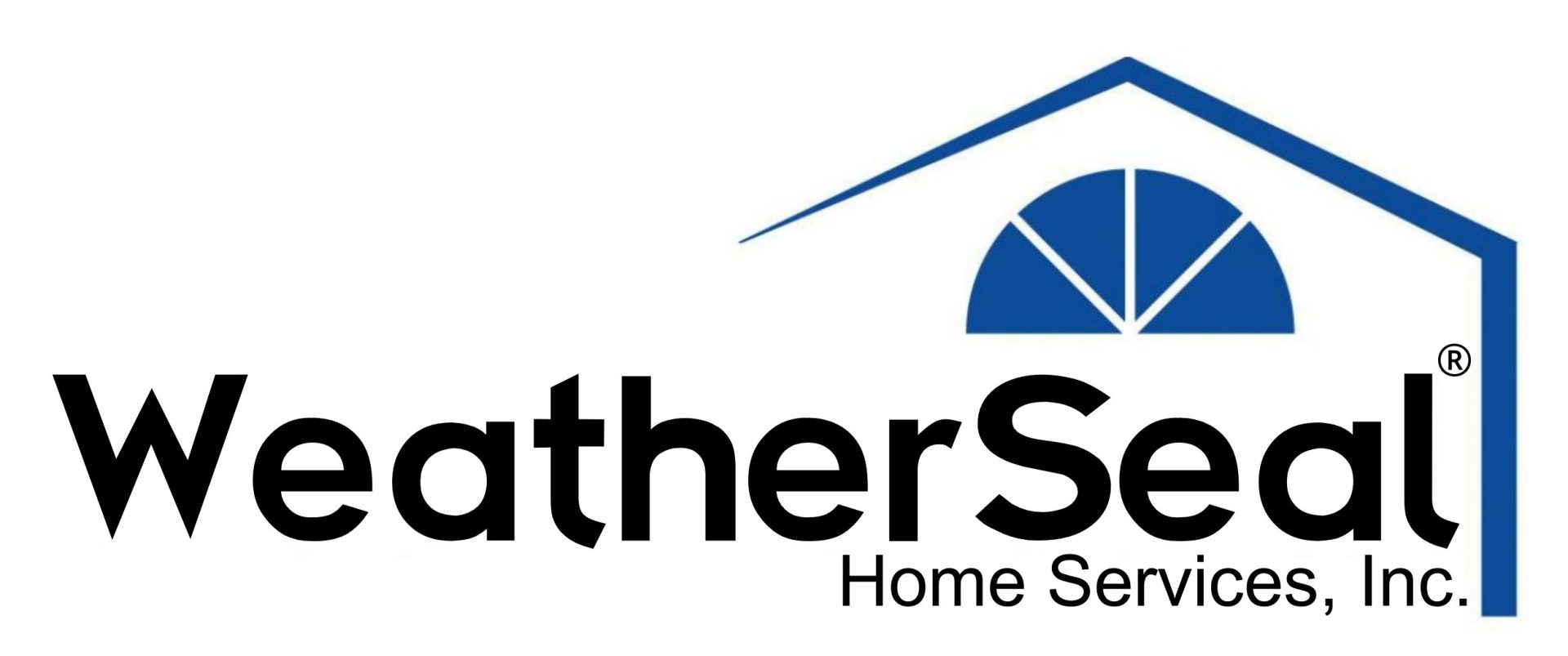Gutters protect your home by directing rainwater away from the foundation. However, debris-filled clogged gutters can lead to water damage, roof leaks, and costly repairs. This is where gutter guards become a valuable addition.
Gutter guards act as a barrier, preventing debris like leaves, twigs, and pine needles from entering the gutters while allowing water to flow freely. Understanding “What are gutter guards?” and their various options is important for keeping your home safe and minimizing long-term maintenance.

What Are Gutter Guards?
Gutter guards are devices designed to fit over or inside gutters. They prevent debris from blocking the flow of water. These protective barriers help reduce the frequency of gutter cleaning and lower the risks associated with clogged gutters.
Without protection, debris accumulation can cause water to overflow. This will lead to potential issues like foundation cracks, mold growth, and damage to the fascia and soffits.
How Gutter Guards Work
The primary purpose of gutter guards is to filter out large debris while maintaining the natural flow of water through your gutter system. Depending on the type of gutter guard, they may rely on physical barriers, surface tension, or a combination of both to keep debris out.
Some designs, like mesh or screen guards, physically block leaves and twigs. Others, such as reverse curve systems, use water’s surface tension to direct it into the gutter while debris falls off the edge.
Types of Gutter Guards
Below, we explore the most common types of gutter guards in detail, highlighting their advantages and disadvantages to help you make an informed decision.
Screen Gutter Guards
Screen gutter guards are among the simplest and most affordable options available. These guards consist of a mesh-like material made from either plastic or metal, designed to cover the top of your gutters.
The holes in the mesh allow water to flow through while catching larger debris like leaves and twigs. This design makes screen gutter guards ideal for homes in areas with moderate amounts of debris, particularly those with deciduous trees that shed leaves seasonally.
However, while they are effective for larger debris, smaller particles like pine needles or seeds can slip through the mesh. This can lead to clogs over time.
Additionally, the buildup of debris on top of the screen may require periodic cleaning to maintain optimal performance. These guards are easy to install and are widely available. For that reason, they are a popular choice for homeowners seeking a cost-effective solution.
Screen gutter guards work well for homes in regions with moderate leaf fall but may not perform as effectively in areas with heavy rainfall or fine debris.
Mesh Gutter Guards
Mesh gutter guards are a more advanced version of screen guards. They feature a finer mesh made from durable materials like aluminum, steel, or high-grade plastic.
This fine mesh is highly effective in filtering out even small debris, such as pine needles, seeds, and roof grit. The durable materials used in mesh guards also make them a long-lasting option, capable of withstanding harsh weather conditions.
While mesh guards offer superior performance, their initial cost is higher than basic screen guards. In additional, professional installation is often recommended to make sure the guard fits properly and functions as intended. Despite these drawbacks, mesh gutter guards are reliable for homeowners who want minimal maintenance and long-term durability.
Mesh gutter guards share excellent protection against small debris and are a durable choice for homes in areas with heavy leaf or needle fall.
Reverse Curve Gutter Guards
Reverse curve gutter guards are designed with a curved surface that directs water into the gutter while debris slides off the edge. This design takes advantage of surface tension. It guarantees water follows the curve into the gutter while preventing leaves and other debris from entering. Made from aluminum or plastic, reverse curve guards are highly effective in areas with significant debris, such as leaves, twigs, and pine needles.
However, reverse curve guards come with their own set of challenges. They are one of the more expensive gutter guard options and require precise installation to function correctly.
Improper positioning may result in water overshooting the gutter during heavy rainfall. This will lead to potential foundation or landscaping issues. Maintenance can also be difficult, as these guards are often fixed in place. This will require professional assistance to clean any debris that bypasses the system.
Reverse curve gutter guards are ideal for heavy debris areas but require careful installation and carry a higher cost.
Foam Gutter Guards
Foam gutter guards are made from lightweight, porous polyurethane foam that fits directly inside the gutter. The foam blocks debris from entering the gutter while allowing water to flow through its porous structure. These guards are one of the easiest to install. This makes them an appealing option for homeowners who prefer a DIY approach.
While foam guards are inexpensive and lightweight, they have notable disadvantages. Over time, the foam may become a breeding ground for mold and mildew, especially in damp or humid climates.
Furthermore, foam gutter guards tend to degrade faster than other materials, requiring frequent replacement. Despite these drawbacks, foam guards present an affordable, short-term solution for gutter protection.
Foam gutter guards are an easy-to-install, budget-friendly option but may not be the best choice for long-term use or damp environments.
Brush Gutter Guards
Brush gutter guards resemble oversized pipe cleaners. They feature bristles that trap debris while allowing water to flow through the gutter. These guards are placed inside the gutter, with the bristles capturing leaves and twigs while preventing large clogs. They are a low-cost solution and are easy to install without the need for professional assistance.
However, brush gutter guards require frequent cleaning because debris can become trapped within the bristles. Over time, this trapped debris can block water flow, defeating the purpose of the guard. Brush guards are not suitable for areas with heavy rainfall or significant amounts of debris. They are prone to clogging under such conditions.
Brush gutter guards are a simple and inexpensive solution but may require more maintenance than other options, especially in areas with heavy debris.
Benefits of Installing Gutter Guards
Reduced Gutter Maintenance
One of the most immediate benefits of gutter guards is the reduction in gutter maintenance. Without guards, gutters can quickly accumulate leaves, twigs, and other debris. This will lead to frequent cleaning requirements. This task often involves climbing ladders and manually clearing out the blockage, which can be time-consuming and dangerous.
Gutter guards act as a barrier. They keep debris out while allowing water to flow freely through the system. They significantly reduce the frequency of cleaning by minimizing blockages. This makes gutter maintenance easier and less hazardous. While occasional inspections are still necessary, the time and effort required to keep gutters functional are greatly diminished.
Prevention of Water Damage
When gutters become clogged, water cannot flow properly through the system. Instead, it overflows, potentially seeping into your home’s foundation, walls, or basement. Over time, this can cause serious structural issues, including foundation cracks, wall rot, and mold growth.
Gutter guards help prevent these problems by maintaining a clear pathway for water to drain. With a properly functioning system, rainwater is directed away from your home. It protects your property from water-related damage.
For homeowners who have invested in landscaping, gutter guards also prevent overwatering that could harm plants or erode soil.
Protection Against Pest Infestation
Clogged gutters can create an inviting environment for pests. Standing water in blocked gutters attracts mosquitoes. Meanwhile, decomposing debris may lure birds, rodents, and insects. These pests create an unpleasant nuisance and can cause further damage to your home.
Gutter guards reduce the risk of pest infestations by preventing debris buildup and standing water. This added layer of protection keeps unwanted critters at bay and contributes to a healthier, more comfortable living environment.
Increased Gutter Lifespan
Gutter systems are designed to handle a specific amount of water flow and weight. When debris accumulates in the gutters, it adds unnecessary strain and increases the risk of sagging, cracking, or even detachment. Over time, this can lead to rust and corrosion, especially in metal gutters.
Gutter guards alleviate these issues by keeping debris out and reducing the overall weight on the system. Maintaining proper water flow and preventing blockages help gutters last longer. This will save homeowners the cost of premature repairs or replacements.
Improved Safety for Homeowners
Installing gutter guards eliminates the need for frequent gutter cleaning, often involving climbing ladders and working at heights. This task presents a safety risk for many homeowners, especially if they are inexperienced or lack the necessary equipment.
With gutter guards, the need to access the gutters is significantly reduced. This saves time and helps make sure homeowners are not putting themselves in harm’s way. Fewer visits also mean lower long-term maintenance costs for those who prefer professional cleaning services.
Enhanced Property Value
Investing in gutter guards can increase your home’s overall value. Potential buyers often look for features that reduce maintenance and enhance the durability of a property. Gutter guards demonstrate that the home has been well-maintained and equipped with protective measures to prevent future issues.
The added appeal can make your home more attractive to buyers. This potentially increases its market value and reducing time on the market. For homeowners considering selling their property, gutter guards are a worthwhile investment that pays off during resale.
Gutter Guard Installation and Compatibility
Seamless Integration with Your Gutter System
Gutter guards can be integrated into seamless gutter systems for improved efficiency. Seamless gutters, made from a single piece of material, reduce the likelihood of leaks and are an excellent complement to gutter guards.
Professional Installation vs. DIY
While homeowners can install some gutter guards, professional installation is often recommended. Professionals deliver proper positioning and compatibility with your roofing materials to prevent issues like water backflow or roof damage.
Factors to Consider Before Choosing Gutter Guards
Selecting the right gutter guards involves more than picking a style or material. Homeowners must evaluate their specific requirements to find a solution that aligns with their property’s needs.
Factors such as climate, roof compatibility, and maintenance demands significantly determine the most effective gutter guard system. Considering these elements, you can choose a guard that protects your home while minimizing future maintenance and repair costs.
Climate and Weather Patterns
Climate plays a key role in the performance of gutter guards. Homes in regions that experience frequent storms or heavy rainfall need guards designed to handle large volumes of water. Reverse curve gutter guards, with their curved design, are particularly effective in these environments because they direct water into the gutter while shedding debris.
On the other hand, properties surrounded by trees face challenges with falling leaves, pine needles, and other small debris. For these homes, mesh or screen guards present a more practical solution. Their fine filtering capabilities keep even small particles from clogging the gutter system.
Selecting a guard tailored to your local weather conditions makes sure that your gutter system functions optimally throughout the year.
Roof and Gutter Compatibility
The compatibility of gutter guards with your existing roof and gutter system is another important consideration. Not all guards work seamlessly with every roof design. Older homes with unconventional or custom gutter systems may require specialized guards or adjustments to fit properly.
For modern homes, seamless gutters paired with an appropriate guard enhance efficiency and minimize the risk of leaks. Additionally, roof designs that lack a drip edge might need modifications during installation to prevent water from flowing behind the gutter.
Consulting with a professional installer can help identify potential compatibility issues and make sure that the guards are installed correctly.
Maintenance Needs
Although gutter guards reduce cleaning frequency, they do not completely eliminate the need for maintenance. Different guard styles have varying maintenance requirements. For example, brush and foam guards often trap debris within their bristles or pores. This further necessitates frequent checks and cleaning.
Higher-quality options like mesh or reverse curve guards generally require less upkeep. Homeowners seeking minimal maintenance should prioritize durable materials and designs that resist debris buildup while maintaining water flow. Choosing a guard with lower maintenance needs can save time and effort in the long run.
Cost and Installation
The cost of gutter guards and their installation is a huge factor to consider when choosing the right system. Gutter guards vary significantly in price depending on the material, design, and installation complexity.
For instance, foam and brush guards are inexpensive and easy to install. That’s why they are a budget-friendly choice for DIY homeowners. However, they may not last as long or perform as effectively as higher-quality options.
Mesh and reverse curve guards, while more expensive, offer superior durability and performance. Professional installation is often recommended for these types to bring proper positioning and compatibility with the roof and gutter system.
While the upfront cost may be higher, the long-term savings on maintenance and repairs can make them a worthwhile investment.
Common Issues with Gutter Guards
Gutter guards come with significant benefits. However, they are not without their challenges. Improper installation, poor material choices, or mismatched designs can reduce their effectiveness and even lead to additional problems.
Understanding these common issues helps homeowners address potential concerns and make informed decisions about their gutter guard systems.
Water Overshooting
Water overshooting is a common problem, especially with reverse curve gutter guards. These guards are designed to direct water into the gutter using surface tension while allowing debris to fall off the edge.
However, during heavy rainfall, water may flow too quickly to adhere to the curve and cause it to bypass the gutter altogether. This can result in water pooling near the home’s foundation. It can lead to potential structural damage, soil erosion, and basement flooding.
To minimize this issue, homeowners should opt for guards specifically designed for high-flow scenarios. Proper installation also plays a huge role, as aligning the guard correctly makes sure water follows the intended path. Working with professionals who understand these nuances can prevent costly oversights.
Small Debris Accumulation
While many gutter guards are effective at blocking larger debris like leaves and twigs, smaller particles such as pine needles, seeds, and roof grit can still slip through. Over time, this debris may accumulate inside the gutter, obstructing water flow and requiring manual cleaning.
This issue is particularly prevalent with screen and mesh guards. Although mesh guards with finer openings can reduce the entry of small debris, they are not entirely foolproof.
Homeowners in areas with fine debris challenges should choose guards specifically tailored to filter smaller particles, such as high-grade micro-mesh designs. Periodic inspections and light cleaning can also help maintain performance.
Installation Challenges
Improper installation can significantly undermine the effectiveness of gutter guards. Guards not securely attached or incorrectly positioned may allow water to leak behind the gutters, damaging the fascia and soffits. Similarly, guards installed without proper alignment can fail to direct water correctly. This will further lead to pooling or overflow.
Hiring professionals experienced in gutter guard installation is the best way to avoid these problems. They offer proper placement, compatibility with the existing roofing system, and alignment to maximize functionality.
The Role of Gutter Guards in Long-Term Property Maintenance
Foundation Protection
Overflowing gutters caused by blockages can lead to water pooling near your home’s foundation. This pooling increases the risk of cracks and erosion over time. Gutter guards help channel water away from the home, preserving the integrity of the foundation.
Preventing Roof Damage
Water backflow caused by clogged gutters can damage roofing materials and lead to leaks and rot. Gutter guards minimize this risk by maintaining a clear path for water to exit and reducing strain on your roof. This also prolongs the need for roof replacement and saves homeowners significant costs in the long run.
Enhancing Landscaping
Water overflowing from clogged gutters can erode soil, damage plants, and create uneven ground around your property. Gutter guards help maintain your landscaping’s appearance and structure by keeping gutters free-flowing.
Are Gutter Guards Worth the Investment?
Deciding to install gutter guards depends on factors like your home’s location, existing gutter issues, and your willingness to handle regular maintenance. While gutter guards represent an upfront expense, they can save significant costs over time by reducing maintenance and preventing damage.
· Long-Term Cost Savings
While you may spend more initially, the reduction in gutter cleaning costs and avoidance of damage-related repairs often offsets this expense. For homes that frequently deal with clogged gutters, the return on investment is significant.
· Improved Home Safety
Gutter guards eliminate the need for frequent ladder climbing, reducing the risk of injuries associated with cleaning. This benefit alone makes them a worthwhile consideration for many homeowners.
Maintenance Tips for Gutter Guards
Even with high-quality gutter guards, occasional maintenance offers long-term performance. Adopting a proactive approach keeps your gutter system functioning efficiently.
· Inspect Regularly
Check your gutter guards at least twice a year, ideally during the spring and fall. Look for debris buildup, damage, or any sections that might have shifted out of place. Catching these issues early can save you from more extensive repairs and keep your system working effectively.
· Clean as Needed
Although gutter guards reduce debris, they’re not completely maintenance-free. Over time, leaves, dirt, or small particles can accumulate.
Use a soft brush or a garden hose to clean them off. Be careful not to use high-pressure washers. They can harm the material and shorten the lifespan of your gutter guards.
· Check Adjacent Components
While maintaining your gutter guards, take the time to check nearby roof areas, soffits, and fascia boards. Look for water stains, leaks, or any signs of wear and tear. These could point to larger problems in your drainage system that may need immediate attention.
At WeatherSeal Home Services, we understand the importance of a reliable gutter system in protecting your home. As a family-owned, veteran-owned business, we take pride in delivering exceptional service using high-quality, American-made products. With our BBB A+ rating and commitment to craftsmanship, we offer gutter replacement tailored to your home’s needs.
Contact us today to discuss your project and enhance your home’s protection.







